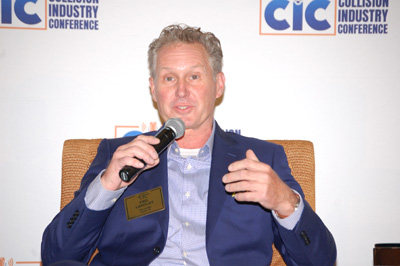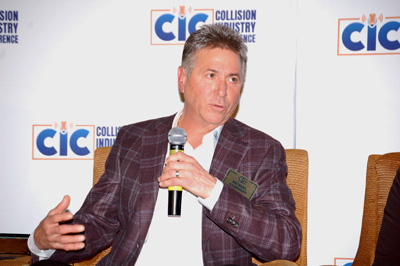Virginia shop owner Barry Dorn said he doesn’t see “who is winning” as the time involved with processing supplements grows.
“My concern is that we all lose that trust with that customer,” Dorn said, during a panel discussion on supplements during this spring’s Collision Industry Conference (CIC). “They see a $1,000 photo estimate turn into a $20,000 blueprint. The trust is lost. The customer knows somebody is lying to them. They just don’t know who.”
He said it’s also hard on front-line employees---both at shops and insurance companies---who have to “go through this frustrating, laborious process,” and might question if it’s something they really want to continue to do, at a time when there’s already a labor shortage.
“It’s almost cruel and unusual punishment,” concurred Mike Giarrizzo, CEO of DCR Systems, which operates eight collision repair shops under partnerships with dealers. He said his company explains to customers what to expect.
“We tell them we’re going to provide their insurer with every bit of evidence and documentation necessary to fix the vehicle correctly,” he said. “We’re going to go out of our way to provide any information that their insurer needs, and convey what needs to be done and why. But we can’t control the way they respond to that.”
Cycle Time Impact
Darrell Amberson of LaMettry’s Collision in Minnesota pointed to the cycle time ramifications of getting supplements approved. He said his company looked at 25 insurance jobs from each of four of the company’s locations.

“Virtually all of them got one supplement, the vast majority had two supplements, and some had three or more supplements,” Amberson said, noting about three-quarters of the 100 jobs were non-DRP. “The average response time, from the time we submitted the first supplement, to when we got the response from the insurer, was 4.2 days. When you looked at the DRP jobs, those were obviously much lower because we get almost immediate response. Those were less than one day.”
But one of the larger insurers had average response time of more than six days, and another more than eight days.
“And I’m not talking about resolution. I’m just talking about a response,” Amberson said. “This is detrimental to all of us, including the insurer. My question is: How long is it going to take the insurers to figure this out so they can get response times down? Those of us who have been around a while recall a time when non-DRP response times were far less than that.”
Andrew Batenhorst of Pacific BMW Collision Center in Glendale, CA, said his shop also measures insurer response time.
“And I have a conversation with the local [claims] managers about how they’re doing,” Batenhorst said. “If we get measured all the time on [key performance indicators], I like to flip the table back on them, and a lot of them are really surprised by what we show them. Having that open conversation can make a difference. Not every carrier is going to be open to that. But one by one, if you start opening up a dialogue, and you realize there’s a way to talk about these things, you can make a difference. They have different metrics than we do, obviously, but we all need to figure this out together.”
The Insurer View
Two of the panelists representing the insurance industry during the CIC discussion shared their perspectives on what could improve the supplement process. Consultant Roger Wright, a former vice president of claims at AIG, sees a role for the automakers.
“We really need the OEs to help clarify some of the procedures they have,” Wright said. “They just don’t make sense to insurance companies, and that’s why they’re so resistant sometimes to paying for certain things.”
Wright said the pandemic may have sped up insurers’ move toward “no-touch” or “low-touch” claims processing, but that transition started at least a decade ago in an effort to reduce claims processing costs.
“That’s measurable to the guys in the ivory tower,” Wright said. “They can’t control severity. Severity is biproduct of the technology we have today and the complexity of the car. So what’s important to the insurance executives, is controlling [claims processing] costs. That means finding a way to handle claims faster---not necessarily better, but faster. Unfortunately it’s caused this [supplement] dilemma we have that’s gotten worse.”
Wright said while many shops are doing better at blueprinting and documentation, much of the industry still isn’t, also contributing to supplement processing issues. Phil Langley, vice president of client services for SCA Claim Services, agreed.
“I can guarantee you that already today---it’s what, about 11 o’clock---we’ve probably already had 100 shop visits where someone from our company shows up and no one is there to even show us where the vehicle is,” Langley said. “If we could work on that, that would be a good first step.”










John Yoswick